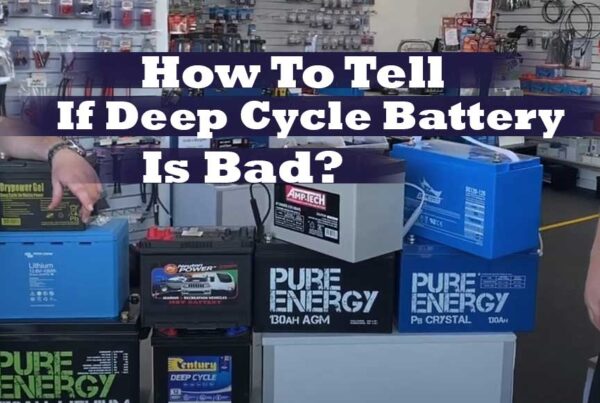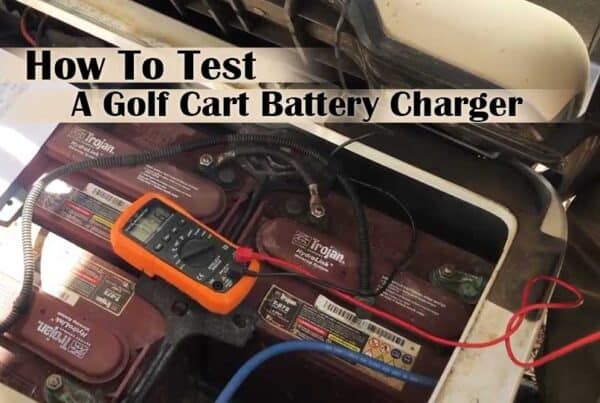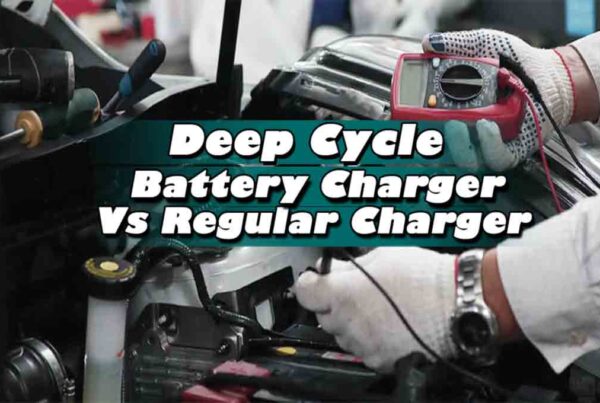Want to boost up your marine battery life, increase its ability, and save it from premature damage? Read our ultimate guide on how to charge a marine battery sharply.
You will find that charging different types of marine battery is so simple and fast after reading our step by step guide. And it will help you to keep your battery fully charged always while boating.
Also, reading the article will assist you in keeping your boat and yourself safe from risky situations avoiding the battery power loss any time.
So, let’s go through our quick and precise guide on how to charge a marine battery (320-35)with a battery charger properly so that you don’t end up facing any hazardous situation amid the sea.
 Inspect the Types of Marine Battery (140-36)
Inspect the Types of Marine Battery (140-36)
It would be wise to know about the types of marine batteries before learning how to charge the marine battery with charger precisely.
You may have a question why? Because there are different types of marine batteries, now, which one did you get? How does it work?
Do you know all these? Maybe not.
These are the simple reasons you should come up with which type of battery your boat owns very first.
It will make your battery charging easy and hassle-free. Okay?
So, let’s know all about the types of marine battery and their function:
Types of Marine Batter under Function
There are 3 types of marine battery according to function such as:
Cranking Battery
A cranking battery is known as the starting battery. This battery types come with high ampere. A cranking battery provides the energy to start the engine effortlessly of your boat.
Deep Cycle Marine Battery
This type of battery is very important for your boat because it supplies the consistent power to the different devices of your boat.
It powers the electronic devices like light, fan, trolling motor, plumbing system, GPS, and all other electronic systems that your boat owns.
But surprisingly it discharges itself slowly and steadily.
Dual Battery
A dual battery works in two ways parallelly. It performs as the starting as well as deep cycle batteries (22,200-50).
So, if you buy such a type of battery, you will get relief from buying two individual batteries for your boat because a dual battery plays the role of 2 in 1.
Types of Marine Batteries (140-36) Under Chemical Make-up
There are 4 types of a battery according to the chemical make-up as they are followed. And you should also know all about them before charging your battery.
So, let’s know…..
Lithium-ion Battery
A lithium-ion battery or Li-ion battery is a type of battery which is rechargeable. This type of battery is popularly used in many types of vehicles. So, a Li-ion battery can be the best choice for your boat though it costs more.
But, it has many benefits to use a lithium-ion battery. You can quickly recharge your Li-ion battery in only 1 hour.
Besides, such types of batteries are easily portable as they are small in size and light. This feature also allows you to store the battery effortlessly.
That’s the reason; a li-ion battery is popularly used for electric vehicles and portable electronics. Also, a lithium-ion battery is growing popularity in aerospace and military applications.
Wet Cell Battery or Flooded Battery
Wet cell batteries are also popular as marine batteries because of their cheap price.
But amazingly, it will stay with your boat for an incredibly long time if you can maintain it properly, keeping it in a high place and away from vibration.
This is a rechargeable battery that is also used in cell phone towers, aviation, energy storage, and electric utilities.
And you have to charge the battery carefully always because it contains a dangerous corrosive liquid known as sulfuric acid, which can cause danger.
Absorbed Glass Mat Batteries (AGM Battery)
AGM batteries are also popular as marine batteries as it has many benefits to use. This type of battery gets charged quickly. And it’s easy to maintain an AGM battery as it doesn’t require water.
It’s also safe to use an AGM battery as this battery doesn’t emit hydrogen gas while getting charged.
So, when you charge an AGM battery, you can do it in any space. It doesn’t need to be ventilated.
And most importantly, the battery works at low temperatures and is resistant to vibration because of its sandwich construction.
But, remember, such a type of battery is expensive and can be discharged to 50%. And you can never overcharge an AGM battery.
If you do it, the battery will shorten its life, and consequently, it may die.
Gel Battery
A gel battery is a powerful and versatile type of battery. It’s a lead-acid batteries, which is also easy to maintain as the battery is valve regulated and vibration resistant.
Also, a gel batteries are safe to use because it’s sealed and carries a viscous gel that is spill-proof.
Besides, you can recharge the battery in any place without ventilation as it produces fewer fumes.
However, remember it initially costs you more, but the cost per month and cost per-cycle is low. Further, the great issue is that a gel cell is generally found in the 500-5000 cycles range in its life.
But the unhappy fact is that the battery can be overcharged frequently if you don’t use a special charger with a regulator and go away in a short time.
How to Charge a Marine Battery with Battery Charger (10-36)
You will learn how to charge marine battery (320-33) with only 5 simple steps as followed. So, don’t make any delay. Rather start reading.
Check the Battery Carefully
You already know which type of battery your boat has and you are going to charge. Right?
Now, it’s time to check the battery minutely.
You know a marine battery is placed in an inky place of your boat where you can’t easily reach. So, usually, a marine battery is found with dust and waste.
That’s the reason, before charging your battery, it’s necessary to check and clean the battery correctly.
Very first, carefully reach your battery, switch off it, and remove it from the battery box.
Then check the battery’s terminals, connections and clean the dirt and corrosion from them. Now, your battery is ready to be charged.
Pick the Right Charger
This is the time to get the right marine battery charger (4400-45) or on boat battery charger (2900-36)
that suits your marine battery. Otherwise, it may cause battery damage.
For example, if you have a wet cell battery, it’s wise to use a quality lead-acid battery charger (720-36).It will allow you to charge the battery fast and easily.If you select deep cycle battery then check our marine deep cycle battery charger.
On the other hand, if your boat possesses an AGM battery, it’s highly recommended to pick a smart multi-stage battery charger (50-36). Such battery prevents the battery from the risk of damage owing to overcharging.
A multi stage battery charger (720-36) is a 3 stage battery charger (140-36) as bulk phase, absorption phase, and float phase.
So, while charging the battery, it supplies the energy to the battery in these three stages. As a result, it charges your battery safely and keeps it safe from any internal damage.
Besides, a multi stage battery charger (720-36) charges the battery fast and thoroughly, but there is no chance of overcharging.
Thus a 3 stage battery charger (140-36) works to maximize your battery life, enhance its capacity, and lessen the possibility of electrolyte loss.
What Type of Charger Should You Pick?
Here, you can use two types of battery chargers as a portable charger or onboard charger. It’s up to you.
But, a portable charger is easy to carry and you can use it wherever you like removing the battery from the boat.
Besides, the portable charger costs less than the onboard charger. But, the problem is that a portable charger is sometimes troublesome to connect though it doesn’t happen with a high-quality portable charger (30-36).
On the other hand, an onboard charger is pricier than a portable one. And you have to install it with wiring permanently in your boat.
But, interestingly, it’s handy and hassle-free to use. Just, you need to plug it in—nothing else.
Connect the Charger to the Battery and Charge
I hope, you could pick the appropriate charger to charge your battery.
Now the time has come to connect the charger to your battery to charge it.
Firstly, connect the charger clips to the terminals of your marine battery.
Okay?
When you find that you have connected the clips, then switch on the battery and allow it to be changed.
Here, I tell you if you have a smart battery charger, you can monitor the LED display to be ensured if the battery is getting charged correctly.
Remove the Charger
Once you discover that your battery is fully charged, don’t make any delay to switch off it and disconnect the clips of the charger from the battery terminals.
Then keep the battery into its original position. But, before that, don’t forget to place the top cover back on to the battery box.
When you find everything is done, it’s time to go boating and enjoy it.
Safety Tips
You know a marine battery is made of chemicals and other ingredients that are risky.
So, while handling and charging a marine battery, you should follow the following tips to ensure your safety.
- Wear gloves and goggles
- Get a well-ventilated space to charge the battery
- Switch off the battery before disconnecting and connecting again.
- Stop charging if you discover the battery gets too hot
- Defrost the battery before charging if it’s iced.
- And finally, don’t forget to read the charger manual.
 Final Thought
Final Thought
After reading the article now, you know well how to charge a marine battery with a battery charger properly.
So, I believe right this moment you feel charging a marine battery isn’t a difficult job.
Rather, it’s a simple task!
But you should follow all the steps one after another to ensure your safety and boost your battery life.
Then you will find everything is working effectively to make your boating happy.



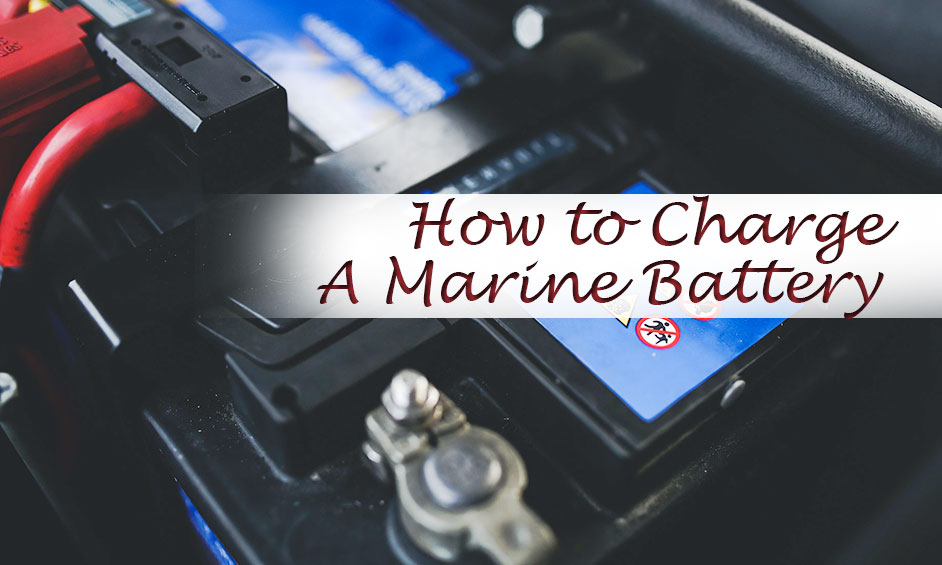 Inspect the Types of Marine Battery (140-36)
Inspect the Types of Marine Battery (140-36)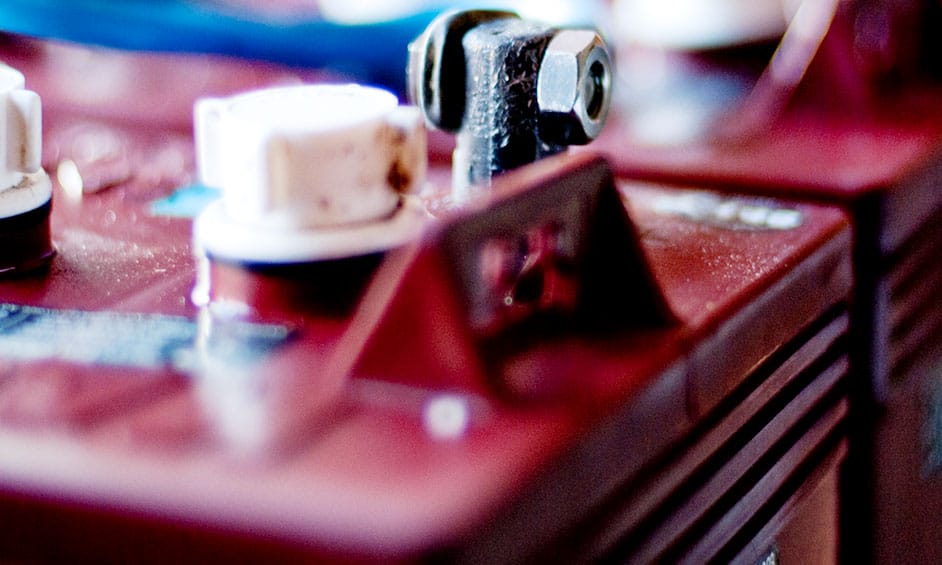 Final Thought
Final Thought